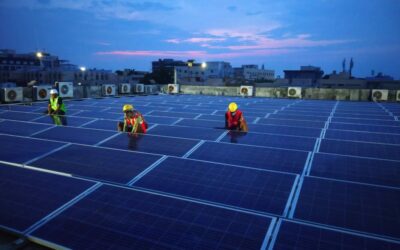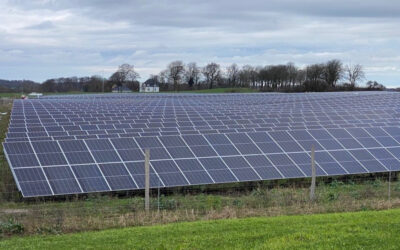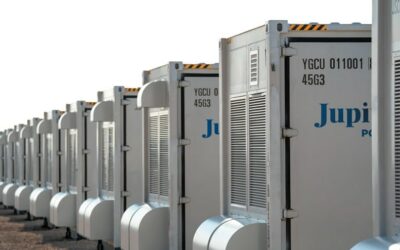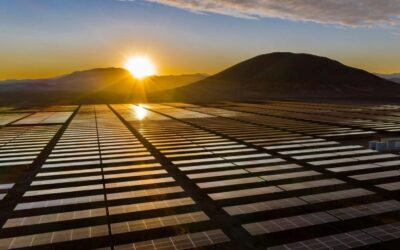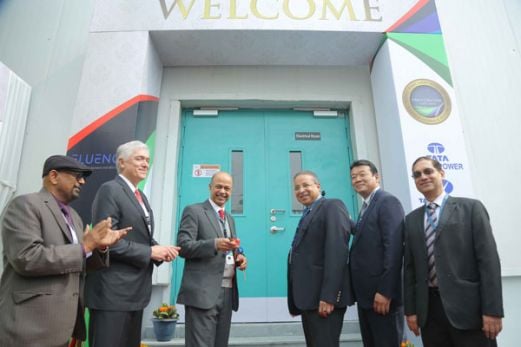
The government of India has published a framework for promoting the use of energy storage aimed at enabling dispatchable renewable energy, more reliable grids, and economic development.
The Ministry of Power issued new guidelines late last month, with stated objectives that include having 24/7 dispatchable or ‘round-the-clock’ (‘RTC’) renewable power, reduction of greenhouse gas (GHG) emissions and reducing the cost of energy.
Enjoy 12 months of exclusive analysis
- Regular insight and analysis of the industry’s biggest developments
- In-depth interviews with the industry’s leading figures
- Annual digital subscription to the PV Tech Power journal
- Discounts on Solar Media’s portfolio of events, in-person and virtual
Or continue reading this article for free
It is also directed at enabling shifts in electricity market design to incentivise the participation of energy storage systems (ESS), establish market mechanisms for that participation and let ESS deliver grid-balancing ancillary services.
The government also wants to see energy storage used as a means to bringing electrification and energy independence to remote or island communities, and promote energy storage as an industry and driver of the economy.
There are also some technical aims to the guidelines, such as fostering the development of technical standards for performance and safety, and other social aims such as promoting equitable access to energy storage for all of the population.
Recently overtaking China as the world’s most populous nation, and with big ambitions to deploy 500GW of non-fossil fuel energy resources by 2030, India’s government has long been speaking of its recognition of the key role energy storage could play in achieving that goal.
It has in the recent past launched tenders for energy storage, whether standalone or hybridised with generation through state-owned entities such as the Solar Energy Corporation of India (SECI), but this new document appears to be a step towards creating a market requiring less hands-on intervention from the public purse.
Huge step up in India’s estimated energy storage requirements
The amount of energy storage India requires to attain those goals could be far higher than previous forecasts and predictions had hinted at.
Previously, the country’s Central Electricity Authority (CEA) had modelled a need for about 28GW/108GWh of energy storage by 2030 to support that 500GW goal, which includes 450GW of wind and solar PV.
That was a more conservative estimate than the ‘160GWh or more’ that trade group India Energy Storage Alliance (IESA) had analysed a need for.
It was also considerably more conservative than the 182.9GWh need by 2030 that government innovation think tank Niti Aayog estimated would likely be necessary.
All three prior forecasts will however be blown out of the water by the CEA’s latest modelling, which the Ministry of Power quoted in its framework document.
The authority’s forthcoming National Electricity Plan (NEP) 2023 gives estimates of India’s energy storage requirements in the coming years. It includes battery storage, but also pumped hydro energy storage (PHES), which has already seen a major comeback in India in the past 3-5 years.
Starting from year 2026-2027, CEA is estimating a requirement for:
| Year | Battery Storage Output (GW) | Battery Storage Capacity (GWh) | Pumped Hydro Output (GW) | Pumped Hydro Capacity (GWh) | Total Output (GW) | Total Capacity (GWh) |
| 2026-2027 | 8.68 | 34.72 | 7.45 | 47.6 | 16.13 | 82.32 |
| 2029-2030 | 41.65 | 208.25 | 18.98 | 128.15 | 60.63 | 336.4 |
| 2031-2032 | 47.24 | 236.22 | 26.69 | 175.18 | 73.93 | 411.4 |
This equates to a cost of around IR75.2 billion (US$910 million) over the timeframe 2027-2032 for pumped hydro, and around IR2,926 billion (US$35.2 billion). By 2047, India could need 320GW/2,380GWh of storage, CEA has projected, 230GW/1,840GWh of battery energy storage system (BESS) assets and 90GW/540GWh of pumped hydro.
Standalone ESS to participate as ‘merchant units’
The guidelines then cover aspects such as the different range of services and applications energy storage could provide including storage paired with generation, or with transmission and distribution (T&D) infrastructure, as well as standalone ESS that can operate as “merchant units that have the capability to engage in energy or capacity trading in power markets in accordance with existing rules and regulations”.
As mentioned above, the government has already been working to establish an energy storage industry ecosystem and opportunities for storage, and the guidelines recap many of these efforts and offer further details on how they work, or are expected to work.
That includes proposed Viability Gap Funding (VGF) for specific projects, an energy storage obligation added to renewable energy purchase schemes in 2022, rules for replacing diesel generators, previous and ongoing tenders, previously released guidance for pumped hydro development and other initiatives and schemes.
The full Ministry of Power guidelines can be seen here.


